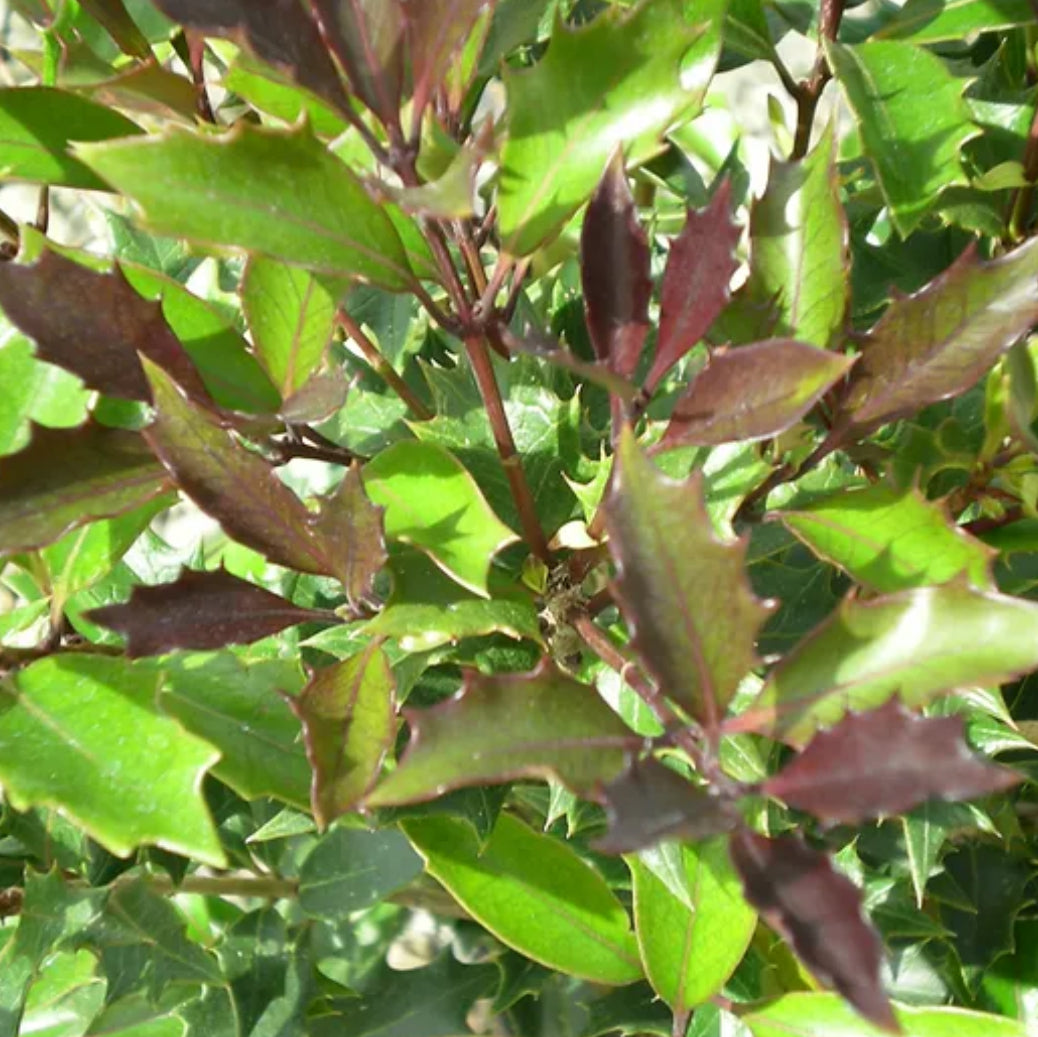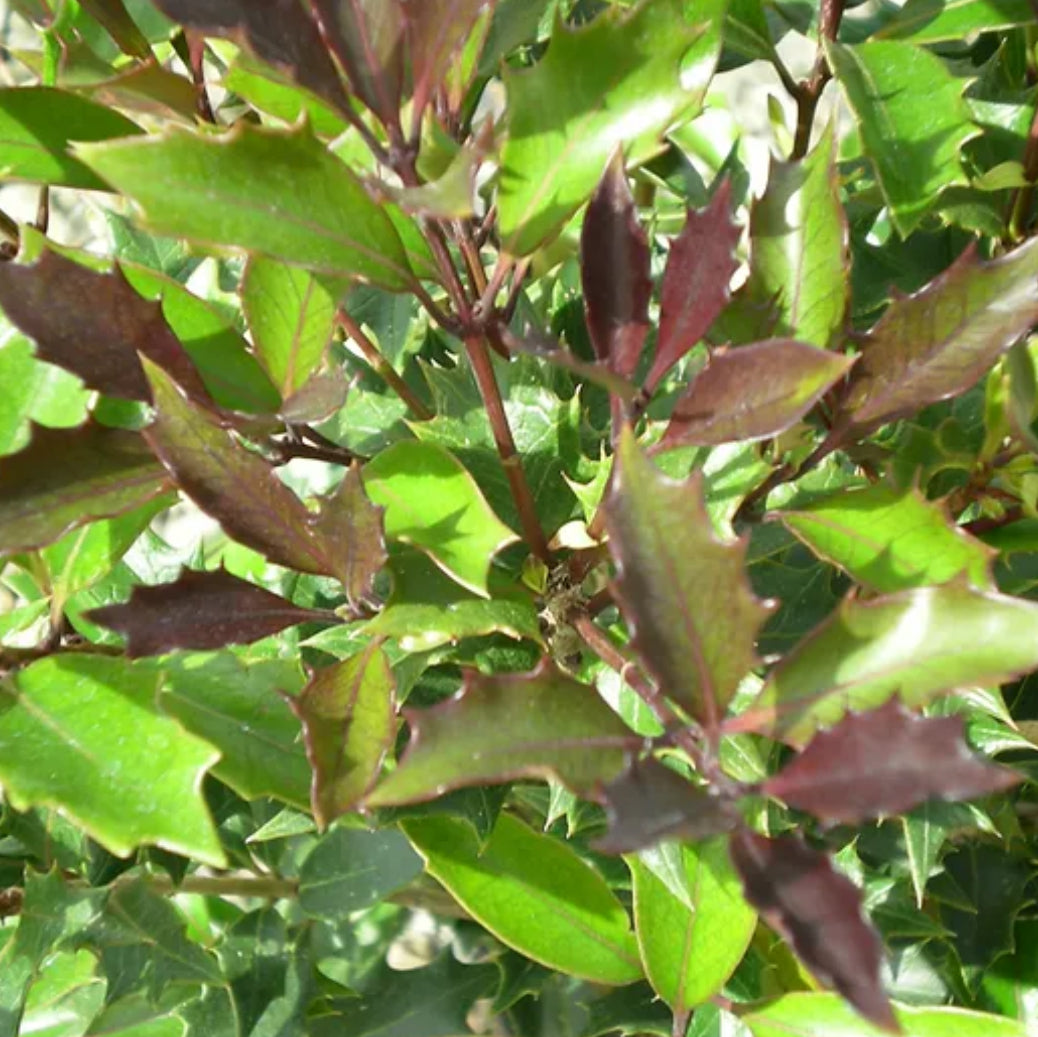Cistus Nursery
*RETAIL - Osmanthus heterophyllus 'Purpureus'
*RETAIL - Osmanthus heterophyllus 'Purpureus'
An old cultivar that is probably the hardiest of the holly-leaved, sweet olives. The new foliage emerges deep purple in spring and matures to dark green, making a lovely backdrop for the intensely fragrant, late summer white flowers. An evergreen shrub that reaches to 8-10 ft tall x 6 ft wide. Part shade to full sun with the best leaf color in brightest light. Drought tolerant but thrives and blooms better with occasional summer water. Easily pruned to create a formal hedge or into tree form as a single specimen. Frost hardy in USDA zone 7.
PURPLE-LEAF FALSE HOLLY
Oleaceae
*THESE SIZES ONLY AVAILABLE FOR SALE IN OUR RETAIL NURSERY
Planting Recommendations
Planting Recommendations
Under most conditions, planting directly into the garden is best. Keep in mind, that in our care, plants have been protected from intense sunlight and drying winds and would therefore require sheltered transition time in order to acclimate to such conditions in your garden.
All plants going into containers (rather than in the ground) should be potted immediately in well-drained potting mix and watered well to ensure the soil is fully moistened with no air pockets. Succulent plants abide by different rules (**see below).
Plants held for later planting are best stored in a cool greenhouse or a well-lit garage or basement, rather than in your house where conditions are likely too warm and dry.
Those plants needing time to acclimate can be set out in pots and provided some shade and shelter for the first week to allow for a successful transition.
**For cacti and other succulents, we recommend using a soil mix of less than 30% organic matter, preferably a 2-1 blend of cactus/succulent potting soil and pumice, perlite or lava rock. These plants are sensitive to prolonged heavy moisture, especially in cool/winter conditions. Keep this in mind when watering them for the first time. It is better to leave them dry in lower temperatures.
Share


